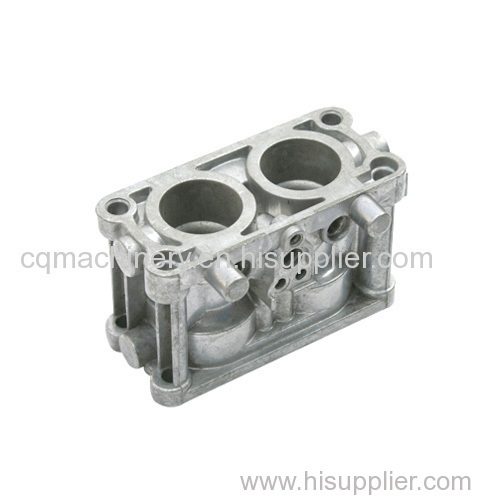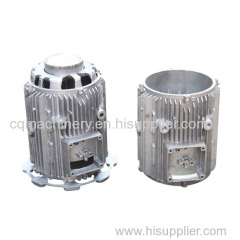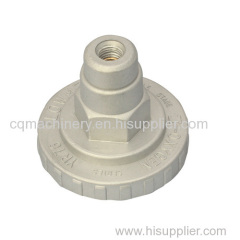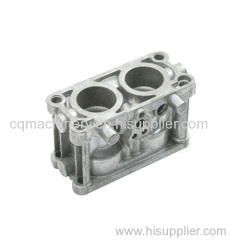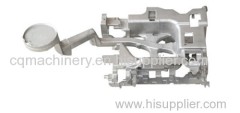|
Ningbo CQ Machining Co., Ltd.
|
Die casting valve body
| Payment Terms: | T/T,L/C |
| Place of Origin: | Zhejiang, China (Mainland) |
|
|
|
| Add to My Favorites | |
| HiSupplier Escrow |
Product Detail
Type: CQ049
Material: Aluminium
Surface treatment: according to the customer's
We can supply for you all kinds of die casting valve parts.
The valve body English: valve body is a valve in the main components; different machinery manufacturing method according to the pressure level. For example: casting, forging and so on.
Low-pressure valve specifications usually casting process to produce the body.
Specifications of high pressure forging body production process.
After the valve and valve seat ring and forms a seal together to effectively withstand the media pressure.
The definition of "valve" in the fluid system is used to control the direction of the fluid, the pressure device, flows. The pipe and the valve is medium (liquid, gas, powder) or stop the flow within the device, and the flow control means
Depending on valve body materials technology media, use of different materials.
Common material: cast iron, cast steel, stainless steel, carbon steel, plastic, copper, etc.
Material Description
1. Gray cast iron
Gray cast iron valves with its low prices, wide range of applications and applications in various fields of industry. They are typically used in water, steam, oil and gas is the case of the media, and is widely used in chemical industry, printing and dyeing, oil-free, textile and many other little impact on iron contamination or no impact on industrial products. Suitable for working temperatures between -15 ~ 200 ℃, nominal pressure PN ≤ 1.6MPa of low pressure valves.
2. Ductile
Ductile iron is an iron, the iron, spheroidal graphite slug or replace flake graphite gray cast iron. This change makes an internal structure of the metal mechanical properties better than ordinary gray cast iron, and does not damage other properties. So, with ductile iron valves than those made of gray cast iron valves higher pressures used. Suitable for working temperatures between -30 ~ 350 ℃, nominal pressure PN ≤ 4.0MPa of low pressure valves. For medium is water, water, steam, air, gas, oil and so on.
3. Carbon Steel
Initially developed to adapt to those beyond the steel is cast bronze valves and valve capacity production needs. However, due to the use of carbon steel valves good overall performance, and thermal expansion, shock loads and strength to resist deformation of the pipe stress is large, so that it extend the range of use, typically include the use of cast iron and bronze valves of the valve operating conditions . Suitable for working temperatures of -29 ~ 425 ℃
Aluminium Valve body
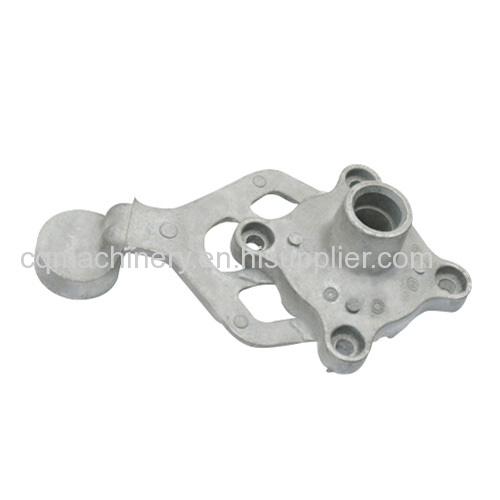
Depending on the effect of opening and closing the valve, the valve classification of many, here the following types.
1 Press the role and use classification
(1) cut-off valve: shut-off valve, also known as a closed valve, its role is to connect or disconnect the line media. Cut valve include gate valves, globe valves, plug valves, ball valves, butterfly valves and divide.
(2) Check: also known as one-way valve or check valve, check valve, its role is to prevent the media back in the pipeline. Pump water off the bottom valve check valve also belong to the class.
(3) safety valve: the role of the class is to prevent pipeline valve or device in the medium pressure exceeds a predetermined value, so as to achieve security objectives.
(4) control valve: Valve category includes control valve, throttle valve and pressure relief valve, and its role is to regulate the media pressure and flow number three.
(5) shunt valve: the shunt valve and the dispensing valve includes various filters, such as its role is assigned, the line of separation, or mixed media.
2 Press nominal classification
(A) vacuum valve: the working pressure is lower than the standard atmospheric pressure of the valve.
(2) low pressure valve: refers to the nominal pressure PN ≤ 1.6Mpa valve.
(3) the pressure valve: refers to 2.5,4.0,6.4 Mpa, PN valve.
(4) high-pressure valve: refers to the workers, said pressure PN is 10 ~ 80Mpa valve.
(5) high pressure valves: refers to the nominal pressure PN ≥ 100Mpa valve.
3 Classification by Operating Temperature
(1) ultra-low temperature valve: for medium temperature t <-100 ℃ of the valve.
(2) low temperature valve: for medium temperature -100 ℃ ≤ t ≤ -40 ℃ valve.
(3) at room temperature valve: for medium temperature -40 ℃ ≤ t ≤ 120 ℃ valve.
(4) the temperature valve: for medium temperature 120 ℃
(5) high-temperature valve: for medium temperature t> 450 ℃ of the valve.
4 Classification by drive
(A) does not require external automatic valve driving means, but on their energy to the medium of the valve the valve operation. Such as safety valves, valves, steam traps, check valves, automatic control valve.
(2) power-driven valve: the valve may use a variety of power-driven power source driven.
Electric valve: the valve means of the electric drive.
Pneumatic valve: With compressed air-driven valves.
Hydraulic valve: With oil, liquid pressure driven valve.
In addition there are more than a combination of several driving modes, such as gas - electric valve.
(3) manual valve: With manual valve hand wheels, handles, levers, sprockets, manipulated by a human valve action. When the valve opening and closing torque is large, round or worm gear can be set between the hand wheel and stem. When necessary, you can also make use of universal joints and drive shafts for remote operation.
In summary, the valve classification methods are many, but mainly in the line of their role of classification. Industrial and civil engineering universal valve can be divided into 11 categories, namely, gate valves, globe valves, plug valves, ball valves, butterfly valves, diaphragm valves, check valves, throttle valves, safety valves, pressure reducing valves and traps. Other special valves, such as instrument valves, hydraulic control valve piping systems, various chemical mechanical equipment, such as a valve body, are not within the scope of this book describes.
5 Press the DN classification
(1) small diameter valve: Nominal diameter DN ≤ 40mm valve.
(2) in diameter valves: DN DN is 50 ~ 300mm valve.
(3) large diameter valves: valve DN nominal valve is 350 ~ 1200mm.
(4) large diameter valve: Nominal diameter DN ≥ 1400mm valve.
6 Classification by structural features
(1) cross-shaped door: opening and closing parts (valve) driven by the stem for the lifting movement along the centerline of the seat;
(2) cock-shaped: opening and closing pieces (gate) driven by the stem in the valve seat for the lifting movement along the vertical centerline;
(3) plug: opening and closing pieces (cone plug or ball) around its centerline of rotation;
(4) Swing valves: opening and closing parts (valve) around the outside of the shaft seat;
(5) Butterfly line: opening and closing pieces (disc) around a fixed axis of rotation of the seat;
(6) spool line: opening and closing sliding in the direction perpendicular to the channel.
7 Classification by connection method
(1) threaded connection valves: valve with internal or external threads, connections and pipe thread.
(2) Flanged valves: valve with flange connection with the pipe flange.
(3) welded connection valves: valve with welding groove, connection and pipe welding.
(4) clamp connection valve: body with jaws, pipe clamp connections.
(5) connected to the valve sleeve: the use of the card sleeve and the pipe connection. (6) Wafer connection valve: bolt directly to the valve and two pipes connected together in the form of wear clip.
(6) Wafer connection valve: bolt directly to the valve and two pipes connected together in the form of wear clip.
Valve spare parts:
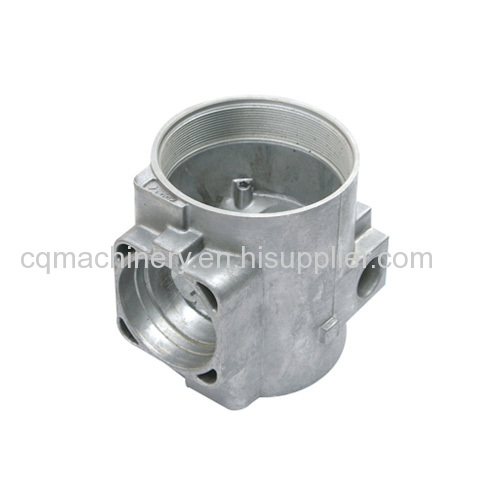
8 Press the body material classification
(1) Metal Material Valves: other parts of its body is made of metal material. Valves such as cast iron, carbon steel valves, alloy valves, valve copper alloy, aluminum alloy valves, valve lead alloy, a titanium alloy valve, Monel valve.
(2) non-metallic materials valve: its body and other parts are made of non-metallic materials. Such as plastic valves, ceramic valves, valve lining, fiberglass valve.
(3) Metal Body lined valves: Body shape as the main surface of the metal, interior contact with the media who are lining, such as rubber lined valves, plastic-lined valves, lined valves and other pottery.
Normal practice requires the user to specify the control valve body materials, especially the special conditions or serious conditions with valves. Many common condition of the valve is the basic requirement to use common materials, such as carbon steel and stainless steel. In most cases, the body material is required for the same pipe material, mainly steel, stainless steel, chrome molybdenum steel (usually called chromium-molybdenum).
Body is made of casting, forging or bar stock steel, or manufactured by pipeline tees and flanges. Due process and the use of larger volume manufacturers, manufacturing costs are the lowest. Special materials and / or higher pressure rating is required shortsighted, entry ANSI1500 level (PN250), 2500 level (PN400) or 4500 (PN700). When transporting hazardous for the circulation and can not use cast or forged body, or structural integrity when necessary, use bar manufacturing body. The need for large angle valve body manufactured. As a general rule, the bonnet or the valve cap (for sealing a top portion of the valve member) to use the same material as the valve body. While most use to manufacture the bar instead of casting. An exception to the general rule is pressed against chromium molybdenum valve, which valve size 6in (DN150) or more hours, often use stainless steel bonnet.
Our company:


We can machining all kinds of die casting valve parts.
please feel free to email us and send drawing or sample to us. We will quote the competitve price to you.
Welcome to visit our factory.

